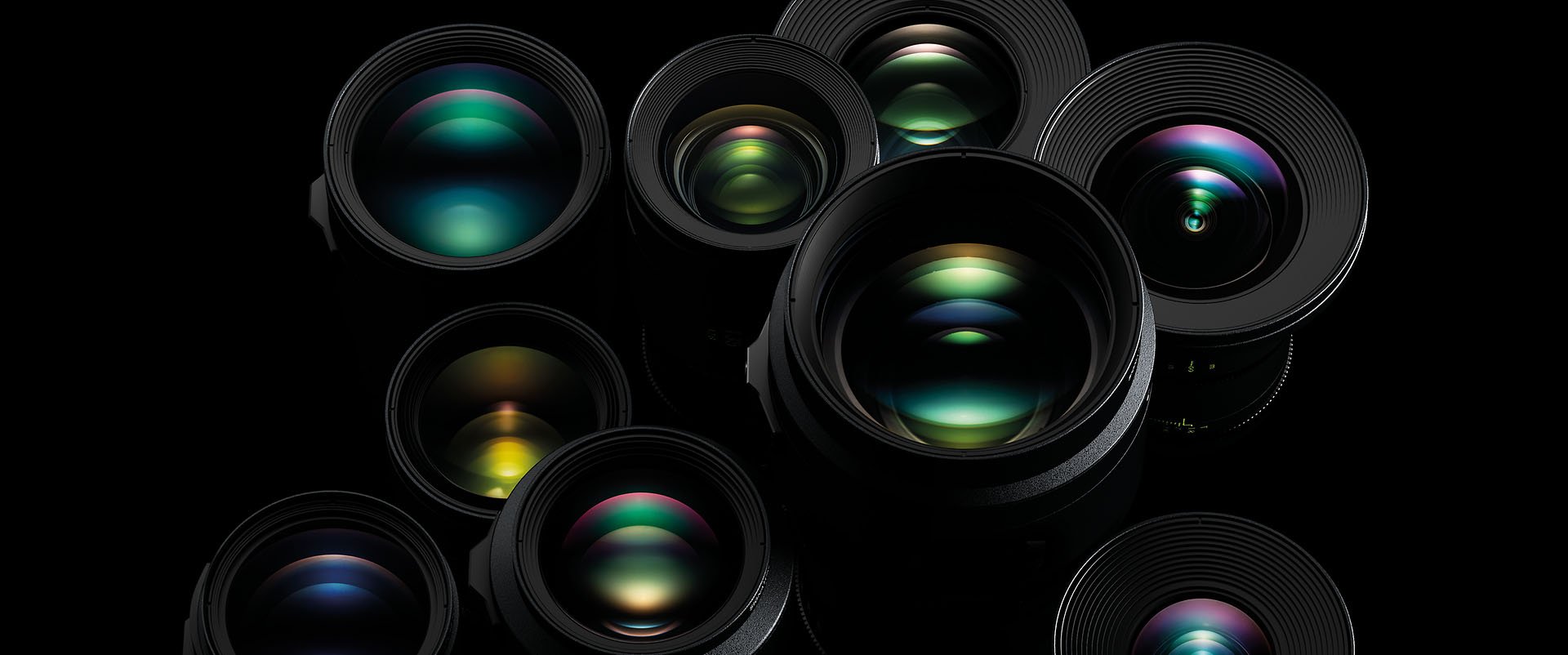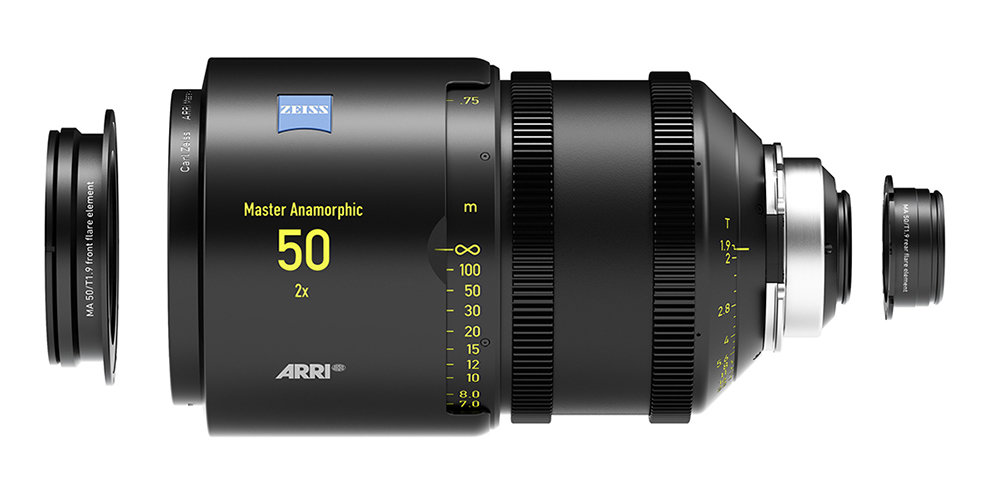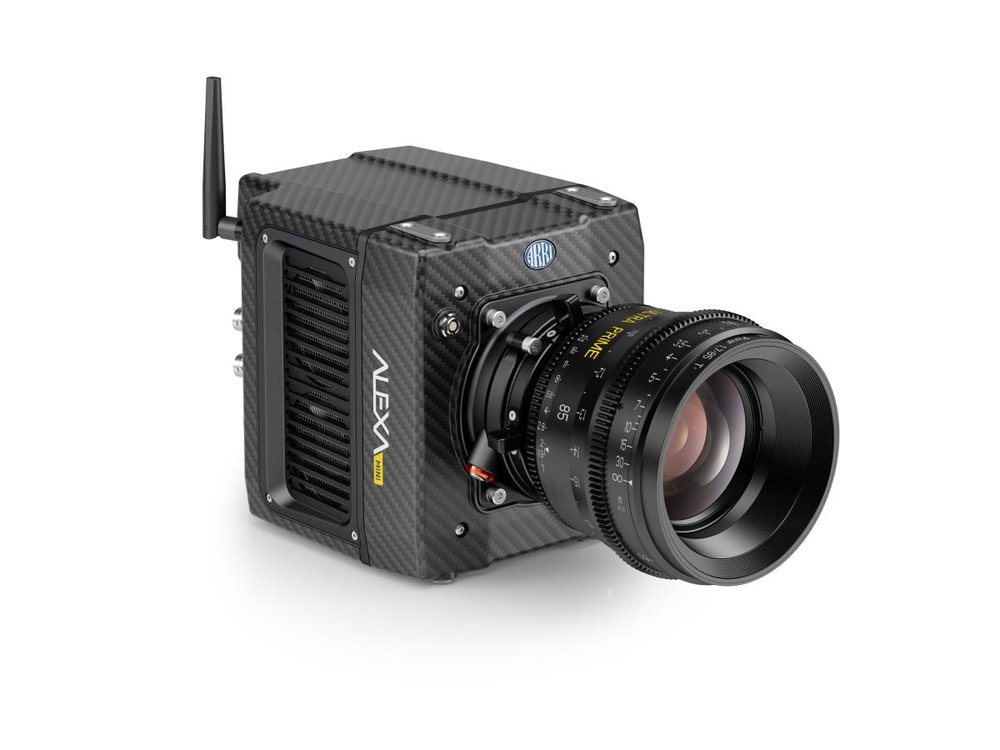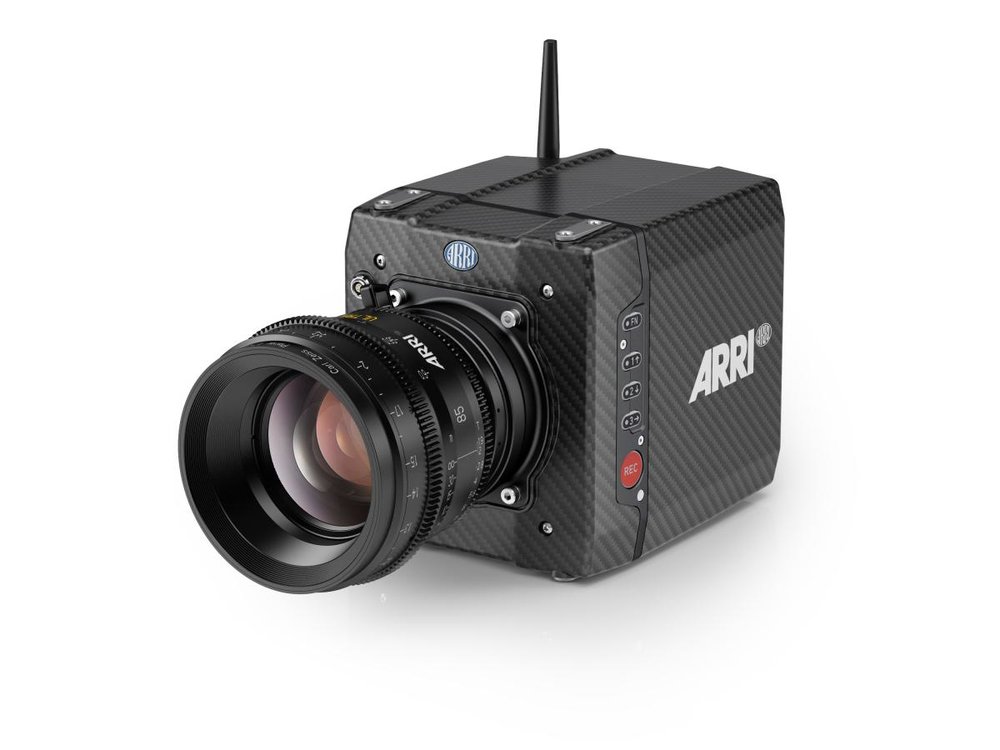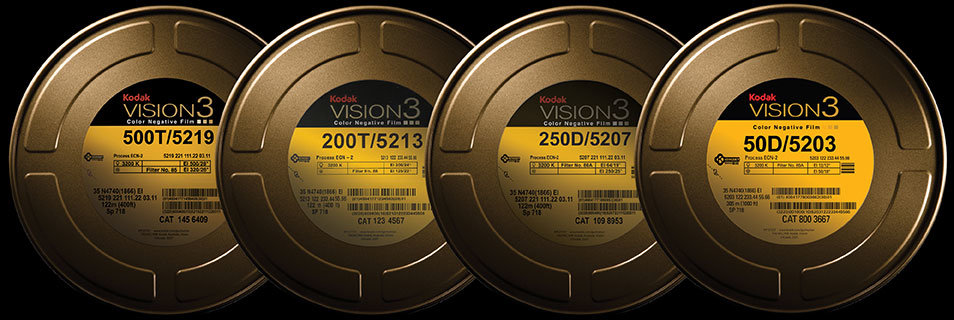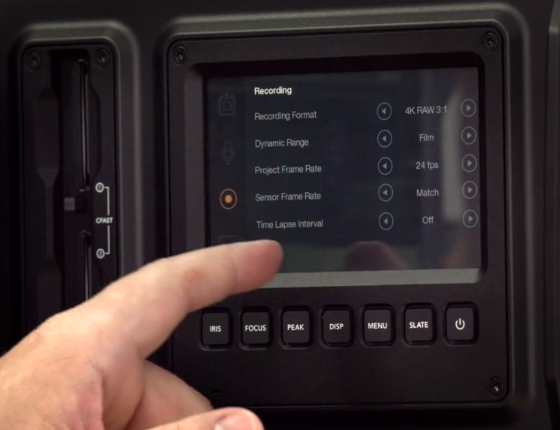-
Posts
1,267 -
Joined
-
Last visited
Everything posted by Tim Tyler
-
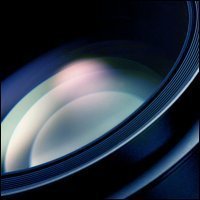
How has this shot been lit?
Tim Tyler replied to Charlie Manton's topic in Lighting for Film & Video
The image looks like it been graded heavily so I can't guess at color temp, It's possible the entire shot was lit with a couple of 60W bulbs plus the practical light. Might be a small Kino source in the foreground but I'd guess a diffused fresnel or even just a soft bare bulb with some diffusion. Why do you ask? -

How has this shot been lit?
Tim Tyler replied to Charlie Manton's topic in Lighting for Film & Video
The facial shadows seem to indicate a small, slightly diffused overhead source between the lens and her face. Probably the same for the background but not quite centered. -
I've been a fan of Univisium for a long time. I actually developed a web site for Storaro years ago but he sort of gave up on promoting it a few years later. To me, the 2:1 ratio is very natural. I thought that Jurassic World looked and felt a lot like Spielberg's earlier films. The choice of camera angles and much of the blocking made me think Spielberg had strong input during storyboarding. On the other hand, the close-ups seemed to be over-lit and too flat in my opinion. especially during the first half of the film. I couldn't help seeing Chris Pratt as Indiana Jones though. Kept wishing for more wise cracks.
-
Kino Flo has stopped manufacturing the sturdy silver louvers that have historically been included with the Diva 200 and Diva 400 lighting fixtures. Most Kino Flo retailers do not have any in stock. Kino Flo HQ currently has ~30 of the Diva 400 size LVR-D4-S and ~60 of the Diva200 size LVR-D2-S in stock, and when those are gone, they'll no longer be available. The silver grids are relatively inexpensive at about $30 compared to the new-style plastic honeycomb grids which cost about $90.
-
Learn how to slate and how not to slate.. This short video demonstrates proper slating procedure and technique.
-
Thanks for the report, Kenny. Do the shadows @1000 ISO look okay when they are boosted in post, or do they get noisy? Maybe the sensor would benefit from "exposing to the left" and protecting the highlight?
-
Jordan Hall gaffed for me on a corporate shoot in Phoenix a few weeks ago. Great experience. Owner Mike Hall is the inventor of the Dana Dolly. AZGRIP.COM - Mike Hall P.O. Box 10115 Glendale, AZ 85318-0115 623-203-0442 / info@azgrip.com http://azgrip.com/
-
Thanks, Matt!
-
Here you go, Chicago. :) http://www.cinematography.com/index.php?showforum=123
-

Eric Kress key light
Tim Tyler replied to Haydn Michael John West's topic in Lighting for Film & Video
Might be some info in these workshop videos. Eric Kress Lighting Workshop -
I had guessed "Avid" by the end of the second paragraph, anyway. I don't think I would have expected much more from them. Seems they're in a bit of a downward spiral while trying to play catch-up without disappointing the corporate machine that dug this hole for them in the first place.
-
The new ARRI Master Anamorphic Flare Sets are highly versatile and economical accessories for the ARRI/ZEISS Master Anamorphic lens series. Each of the seven Master Anamorphic focal lengths has its own specific flare set, comprising easily replaceable front and rear glass elements that can be used individually or in combination to provide the lens with three additional looks for enriched on-set Since their introduction in 2013, the Master Anamorphic lenses have established themselves as the most advanced anamorphic optics ever designed for the film and television industry. Offering a perfect combination of compact form factor, minimal weight, distortion-free optical performance and an unparalleled high speed of T1.9 across the entire focal length range, they are as fast and easy to use as spherical cine lenses and represent a major step forward in anamorphic cinematography. For most shooting situations, cinematographers and also VFX supervisors appreciate how effectively the Master Anamorphic optical design and coating technology suppress flares and reflections. Under certain circumstances, however, flares might be exactly what a cinematographer wants in order to heighten the emotional impact of a shot, sequence or project by introducing a level of technical ‘imperfection.’ It is for these situations that the Master Anamorphic Flare Sets have been designed. The front and rear glass elements that come with each flare set have a special lens coating that encourages flaring, ghosting and veiling glare. These image effects create a visual style that is consistent across all of the flare sets and can be controlled or tweaked via the iris setting, as well as the positioning of lighting fixtures. The front element can be used on its own, as can the rear, or they can be used in combination; each permutation provides a distinct look without sacrificing the resolution, lack of distortion or corner-to- corner optical performance for which the Master Anamorphics are famous. Master Anamorphic Flare Sets By using the new ARRI Master Anamorphic Toolkit (purchased separately but compatible with all seven flare sets), the front and rear glass elements can be exchanged with the regular Master Anamorphic elements in a matter of minutes, since each flare element is pre-aligned in a metal frame. Whether for a feature film, TV show, music video or commercial, the Master Anamorphic Flare Sets give rental facilities a quick and cost-effective way of offering anamorphic productions greater on-set creativity. A set of Master Anamorphics effectively becomes four different sets, each suitable for different flaring requirements while maintaining the huge advantage of being freer from distortions such as curved horizons, focus breathing and ‘mumps’ and ‘pincushion’ effects than any other anamorphic lenses on the market.
-
I'm using a Berkey Systems base plate, Amazon rod offset clamp, a Shape shoulder pad and Cavision handgrips. Works well using the new viewfinder on the C100 mk2. If you have a v1 C100 try to find an eyecup that will fit your viewfinder.
- 3 replies
-
- rig
- shoulder rig
-
(and 2 more)
Tagged with:
-
ARRI announces the new ALEXA Mini, a versatile additional tool in the ARRI ALEXA camera range that combines a compact and lightweight form factor with the same unparalleled image quality that has made the ALEXA system a gold standard for the industry. Designed for specialized shot-making, the ALEXA Mini perfectly complements a full ALEXA shooting kit and allows crews to eliminate the complications of working with third-party cameras by keeping everything within a single system that is trusted all over the world. To maintain ARRI’s famously rugged build quality in a small and lightweight camera, a number of unique design solutions have been incorporated. These include highly integrated and environmentally sealed electronics, a lightweight carbon housing and a solid titanium PL mount that connects directly with the new internal sensor mount to ensure a super-stable flange focal distance, even when using large lenses. Nimble in use and hardy on set, the ALEXA Mini is a go-anywhere tool, easy to transport in backpacks or as carry-on luggage. The ALEXA Mini can be operated in a number of ways: by wireless remote control, as a normal camera with the ARRI MVF-1 multi viewfinder attached, or with an on-board monitor and controlled via the user button interface on the camera body. Light enough to be comfortably held at arm’s length in a hand rig, its compact size and extremely quiet operation also make it ideal for tight shooting conditions. The symmetrical design permits filming in any orientation, including upside-down and in portrait mode, while multiple accessory points enable highly creative mounting solutions. In addition, the ALEXA Mini’s interchangeable lens mount can be replaced with any of those designed for the ARRI AMIRA, allowing the use of B4 video and EF mount stills lenses. Equipped with a 4:3 sensor, automatic de-squeeze mode for anamorphic productions and frame rates of 0.75-200 fps, the ALEXA Mini records ProRes or uncompressed ARRIRAW either in-camera to CFast 2.0 cards or to a specially-designed external Codex recorder that can record image streams from up to four ALEXA Minis simultaneously – a compelling option for multi-camera setups such as 360° plate shots. ALEXA Mini 1Images from the ALEXA Mini will perfectly match those from all other ALEXA cameras, making the final grade easier and quicker. Integrated functionality is at the heart of the ALEXA Mini’s efficient and self-contained design. A built-in lens motor controller allows new active lens motors to be connected directly to the titanium PL mount, while ARRI Lens Data System (LDS) technology provides frame-accurate metadata that can save time and money both on-set and in post. Wi-Fi connectivity means that iOS or Android devices can be used to remotely control camera functions such as the motorized internal ND filters, which permit rapid responses to changing light conditions without adding bulk to the camera configuration. The body design is optimized for use with new-generation brushless gimbals, multicopters and other specialized rigs. It is compact enough in the lens direction to allow the use of standard PL mount lenses even on lightweight and space-constrained rigs, such as gyro-stabilized aerial systems. The camera’s superb low-light performance makes it perfect for underwater work; dedicated underwater housings are currently being developed by leading manufacturers. Like the ARRI AMIRA, the ALEXA Mini can record 4K UHD ProRes images, facilitating real-time 4K UHD output and simple pipelines for high-resolution deliverables. More importantly, the Mini and all other ARRI cameras with the ALEV III sensor offer unrivalled overall image quality by focusing not just on spatial resolution, but also on other parameters such as colorimetry, skin tones and High Dynamic Range (HDR). This is equally true whether the chosen output is HD, 2K, 4K UHD or one of the native resolution outputs like uncompressed ARRIRAW 2.8K or ProRes 3.2K, ensuring that images captured with the ALEXA Mini are future-proof, whatever new industry standards emerge. The ARRI ALEXA Mini is scheduled to begin shipping in May 2015, with orders being taken from March. A prototype of the ALEXA Mini will be on show at the British Video Expo (BVE) from February 24-26, 2015, in Booth J30. http://www.arri.com/alexamini
-
Kodak announced today that it has finalized new film supply agreements with all six major Hollywood studios. As part of these agreements, Kodak will continue to provide motion picture film to 20th Century Fox, Walt Disney Co., Warner Bros. Entertainment Inc., NBC Universal Inc., Paramount Pictures Corp. and Sony Pictures for their movie and television productions. “Film has long been – and will remain – a vital part of our culture,” said Jeff Clarke, Kodak chief executive officer. “With the support of the studios, we will continue to provide motion picture film, with its unparalleled richness and unique textures, to enable filmmakers to tell their stories and demonstrate their art.” Kodak has been engaged in broad discussions with prominent filmmakers, studios, independent artists, production companies, and film processors to enable film to remain a fundamental medium. Last July, the studios made known their intent to play a key role in leading this industry-wide effort. Prior to the agreements being finalized, several highly acclaimed films were produced on film, including Oscar® nominees Boyhood, The Grand Budapest Hotel, The Imitation Game, Interstellar, Foxcatcher, Into the Woods, Leviathan, Inherent Vice and The Judge. Additionally, some of the most-anticipated films of 2015 are being shot on Kodak film, such as Star Wars: Episode VII –The Force Awakens, Mission: Impossible 5, Batman v. Superman – Dawn of Justice, Jurassic World, Ant-Man, Cinderella, Entourage, and Trainwreck. The agreements announced today make it possible for Kodak to continue to manufacture motion picture film while also pursuing new opportunities to leverage film production technologies in growth applications, such as touchscreens for smartphones and tablet computers. This also positions the company to remain the premier supplier of camera negative, intermediate stock for post production, and archival and print film. “With the support of the major studios, the creative community can continue to confidently choose film for their projects,” said Andrew Evenski, Kodak’s president of Entertainment & Commercial Films. “We’ve been asking filmmakers, ‘what makes a project FilmWorthy.’ Their responses have varied from the need for its exceptional depth to its distinctive grain, but overwhelmingly, the answer is ‘the story.’ They need film to tell their stories the way they envision them, and hold a strong desire for it to remain a critical part of their visual language. Enabling artists to use film will help them to create the moments that make cinema history. The agreements announced today are a testament to the power of film and the creative vision of the artists telling them.”
-
The Dawn of Technicolor: 1915-1935 Hardcover – February 24, 2015 The Dawn of Technicolor investigates the people and technology behind this pioneering motion picture corporation. And these are supplemented with production histories and further context on the state of the motion picture industry, competing color technologies, and exhibitor and audience response to color films on the screen. The book is broken down into ten chapters, covering the years 1915 to 1935 in depth. Although Technicolor was formally incorporated in 1915, the story really begins in 1912 with the company’s predecessor, Kalmus, Comstock & Wescott, Inc., an industrial research firm from Boston, Massachusetts. Over the following twenty years, Technicolor developed a series of two-color processes as necessary steps toward full-color photography and printing. But despite success in the laboratory and in small-scale production, the company was plagued by repeated disappointments. The feature films The Gulf Between (1917), The Toll of the Sea (1922), Wanderer of the Wasteland (1924), and The Black Pirate (1926) each showed tremendous promise in photography and color design, but implementation flaws resulted in technical problems and commercial failure. With the support of patient investors and the visionary leadership of Herbert T. Kalmus, Technicolor eventually prevailed against daunting odds to create the only commercially viable color process for motion pictures.
-
Is that your Hyperdeck Shuttle, Alan? I'm wondering how the SDI and DC connectors were upgraded.
- 41 replies
-
- custom cables
- custom brackets
- (and 8 more)
-
Blackmagic Design today announced Blackmagic Camera 1.9.9 with updates for the Blackmagic URSA including: Up to 80 frames per second. Variable frame rate feature so off speed clips now playback in project frame rate. Now the record frame rate is not limited by the video frame rate, and users can shoot slow motion or fast motion shots, but all the recorded video files are always set to the video rate, allowing users to see the effect of the higher or slower frame rate when playing. New CinemaDNG 12 bit RAW format that uses 3:1 compression to allow RAW files to be recorded in one third of the size of uncompressed RAW files allowing double the storage capacity on the same sized CFast card. In camera formatting for CFast 2.0 media. New Dashboard menu screen allowing features such as formatting and other settings to be selected, as well as new user interface is scrolling menus. On screen framing guides allowing a range of common feature film aspect ratios to be displayed on the fold out monitor, such as 2.35:1, 1.85:1 and more. Video @ https://www.blackmagicdesign.com/support/video/10063
-
Glad to have you as a new sponsoring advertiser here, Alan.
- 41 replies
-
- custom cables
- custom brackets
- (and 8 more)
-
More perspective from Mark Dando @ Codex: https://codexdigital.com/alexa_65


